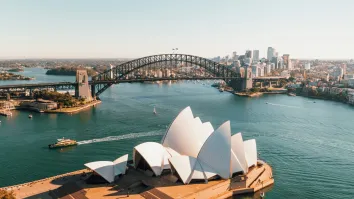From paper to plastic: A look at India's demonetisation
By Shekar GaneshAs millions of people from rural India march into the cashless world, India could face a credit card crisis as early as 2019.
November 8, 2016 will go down the history of the Indian economy for the intrepid decision taken to implement the demonetisation scheme as a first step towards curbing the 'black money virus' that has stifled the growth of the country's real economy since independence. Whilst it has caused hardships to all sections of the population in some way, it has also thrown a new opportunity for banks to cash in, as sizable number of people from rural India move into the cashless society or rather a credit society that will dominate the economy sooner than we would imagine.
In order to capture major share of the market that largely transacted business in cash, banks and financial institutions will be engaged in fierce campaign to woo the masses from rural India to experience the pleasure from enjoying first and paying later. To many however, this sojourn will end as soon as they get into a debt (death) trap. Young graduates working out of makeshift booths will be seen doling out the plastic cards with limits far in excess of credit worthiness, with credit analysis often based merely on the production of an active credit card issued by another bank.
In the absence of any specific directive from the regulatory authority presently for issuing credit cards, banks usually follow their internal credit policy manual. Typically a spending limit of up to four times the monthly income or twelve-month average of credits received into the bank account in other cases is approved, after calculating debt burden ratio and conducting credit bureau checks. Given the mammoth opportunity that lay ahead, banks are more likely to pursue aggressive lending policy that will entail amongst others compromising standard credit checks while approving limits to people who do not have any past credit history.
What would happen to a common man, when you suddenly bestow purchasing power that is hugely disproportionate to his past income? It will not be long before he embarks on a buying binge to fulfill the desires – artificial wants and unnatural hunger – making use of the entire limits on multiple cards (a minimum of two per person) in the belief that there will be sufficient earnings to pay the dues, one month after the spending.
If full settlement is not possible, he will exercise the option to make minimum payment and keep the banks at bay. But can he avoid the trauma as debts keep mounting due to exorbitant interest rates charged by banks on the unpaid amounts? Not long ago this person was leading a peaceful life because his desires were limited to his means. Borrowings beyond income happened seldom, essentially to fund exigencies. Money lenders too capped the loan amount based on complete knowledge of the credit worthiness (ability and willingness to repay) of the borrower. That is why only 5% of all suicides were due to debt or bankruptcy as reported in a research article published by the Indian Express in July 2015.
This scenario will change with the coming of the cashless society. The venom-coated plastic with the power to permanently arrogate the peace from millions of people is very likely to cause yet another financial mayhem similar to the one that South Korea with a population of 48m faced in 2003. The financial system of a country that once boasted of highest savings rate came to its knees with mass defaults on credit card loans, which had recorded of a five-fold increase in less than four years to an astronomical US$58b (15% of GDP) against 78m cards in circulation. It must be noted that the crisis here was the result of defaults on loans against multiple credit cards, primarily encouraged by the government to borrow and spend more to boost the economy.
During the same time, Taiwan registered a growth in card outstanding of 80%, while bankruptcies in Hong Kong went up 28 times due to card debt over a three-year timeframe. The crisis in all the countries cited above was primarily due to aggressive growth in consumer loans. Several studies on bank failures across the globe also point to management's excessively growth-minded actions relative to the circumstances in which they operated as a major reason for the negative effect on their performance.
In the case of India, the crisis could very well manifest on account of the financial institutions – with or without the government support – pushing the common people to borrow against credit cards as a means to fulfill the dreams that did not surface before. It shouldn't surprise us then if by 2019, banks managed to build an alarming credit card (unsecured) loan in excess of US$200b (10% of current GDP).
Demonetisation is arguably the best prescription drug to curb black money, but it will certainly have its own side effects. The people of rural India might easily succumb to the aggressive marketing by bankers in pin-striped suites. A financial crisis will begin to unfold, when the millions of people not used to the credit culture will suffer on account of insurmountable debt burden. Unsustainable household debt burdens would destabilise the financial sector and lead to serious declines in consumer spending and GDP. Noble intention of the demonetisation would ricochet, unless timely action is taken to grow the credit culture gradually, in tandem with real income of people.




















 Advertise
Advertise







